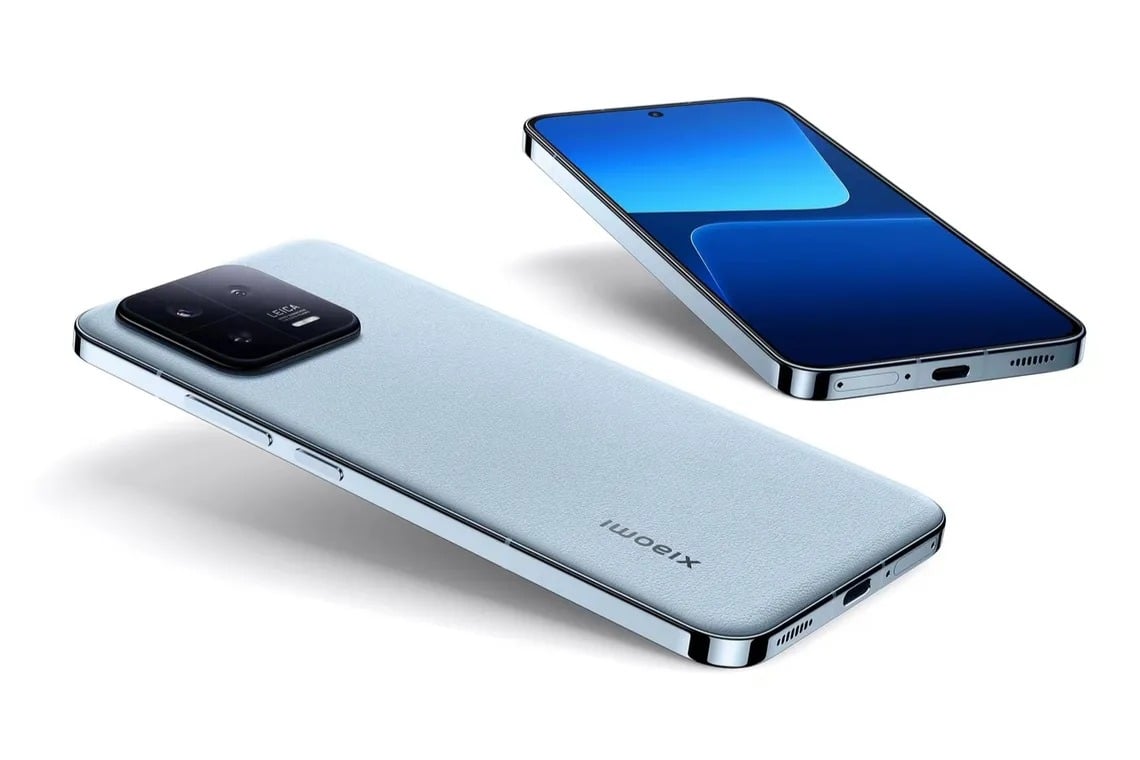
The Xiaomi 13 series consists of two models, the namesake and its Pro version, with the Chinese company emphasizing appearance, build quality and of course the highest technical features in order to be a solid choice for the higher price category.
Apart from the usual glass and metal, those interested can see a different surface on the back called “SKIN” which is made of micro-ceramic which, according to the company, gives a smooth feel when gripped. At the same time, the back surface ensures that it will not get scratched or discolored over time.
Xiaomi 13 and Xiaomi 13 Pro have waterproofing based on the IP68 standard while both models include Snapdragon 8 Gen 2 from Qualcomm With LPDDR5X RAM and UFS4.0 storage for faster speeds. Both phones get the same designs: 8/128, 8/256, 12/256, and 12/512. Xiaomi 13 is the “younger model” of the two with a 6.36-inch OLED display, Full HD resolution and up to 120Hz refresh rate, and the 13 Pro’s resolution rises to 1440p with screen dimensions of 6.73 inches.

After working with Samsung on camera sensors in the previous generation, Xiaomi has returned to Sony with the 13 series. The 1/1.49 IMX800 sensor we saw on the Honor 70 is the head of the “simple” Xiaomi 13 with a resolution of 50MP and is capable of 8K video recording at 24fps . IMX989 1″ We’ve seen it Xiaomi 12S Ultra This summer it was upgraded and transferred to the Xiaomi 13 Pro with better low-light performance, achieving similar results, with a sensor sensitivity increase of 72%. The Pro model also has a 50MP telephoto lens and an ultra-wide-angle sensor with the same resolution. The Xiaomi 13 has a 10MP telephoto lens and a 12MP ultra-wide sensor. The main sensors feature improved HyperOIS technology, while the telephoto lenses feature standard optical stabilization. Finally, both models have a 32MP selfie camera.
Marketing of the two models’ photographic capabilities centers around shooting images at specific focal lengths, specifically promoting Leica’s Professional Master Lens filter that brings classic look simulations to 35mm, 50mm, 75mm and 90mm. However, it is not clear if Leica’s involvement is limited to this specific segment or if it has a larger presence in the imaging system of both models.

With a compatible cable, the Xiaomi Surge Charge can complete the full operation of the battery (4500mAh) of the Xiaomi 13 at up to 67W, while the 4820mAh battery of Xiaomi 13 Pro can be charged at a higher speed of 120W. The two smartphones also support the Xiaomi wireless charging standard at 50W as well as the Qi standard at 10W.
Regardless of how the two models charge, Xiaomi boasts that the battery life lasts longer than any of its premium devices to date with a better cooling system and efficient power usage. MIUI 14 (possibly based on Android 13) should play a big role with shrinking firmware size and a focus on reducing app processes.
Xiaomi 13 starts at 3,999 yen (~$575), while Xiaomi 13 Pro starts at 4,999 yen (~$720) and goes up to 6,299 (~$905), both of which are the highest announced by the company for this series. It will be available in black and white as well as the pastel colors Wilderness Green and Mountain Blue. Sales begin in mainland China on Wednesday, December 14th, and we may learn more about their European debut in February at MWC.
-
5
-
2

“Total alcohol fanatic. Coffee junkie. Amateur twitter evangelist. Wannabe zombie enthusiast.”







More Stories
Is this what the PS5 Pro will look like? (Image)
Finally, Windows 11 24H2 update significantly boosts AMD Ryzen – Windows 11 performance
Heart Surgeon Reveals The 4 Things He ‘Totally Avoids’ In His Life